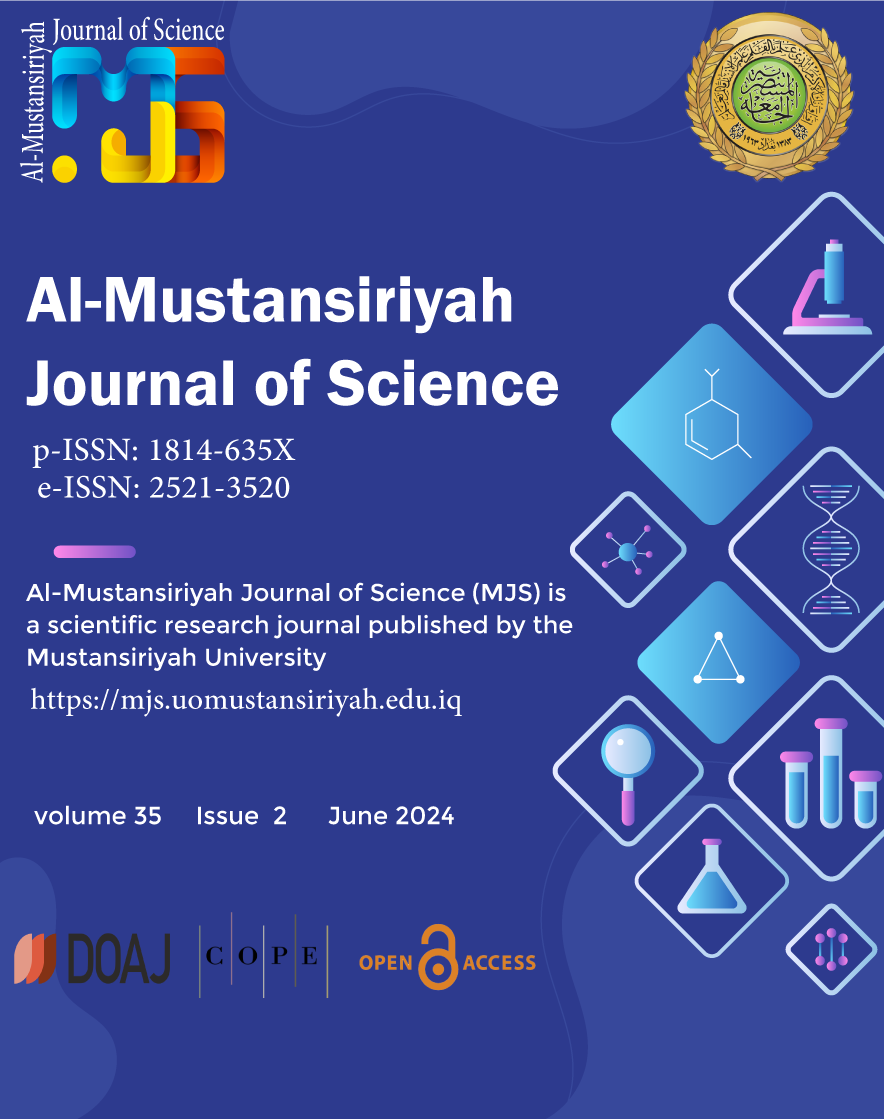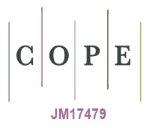Theoretical Study for Stabilizing Group 14 Elements by Five Different Carbene Ligands as L-E-E-L Complexes
DOI:
https://doi.org/10.23851/mjs.v35i2.1395Keywords:
Main group compounds, Phosphorus carbenes, Bonding motifs, Electron donation, Theoretical StudyAbstract
Background: The computational calculations have been employed as a great tool to understand the stabilization of main group species by carbene ligands, which have been recognized as excellent compounds for coordinating highly reactive main-group elements in their zero oxidation state. Objective: The most important results that have been published up to now shown that N-Heterocyclic carbene and Cyclic (Alkyl)(Amino)Carbene ligands can stabilize main group compounds as highly stable complexes. Methods: That led us to further theoretically investigate the possibility of expanding this feature with phosphorus carbenes which have more electron contributing ability. Results: The bonding condition of the E2L2 molecules (where E is group 14 main group elements and L is Carbene ligands) may be understood in depth due to the combination of two ligands with two groups of 14 elements. The combination provides a guideline for synthesizing molecules with novel bonding motifs. Two atoms of group 14 are stabilized by two donor ligands in this bonding picture. In contrast to the E=E bonds seen in nitrogen carbene complexes, all phosphorus carbene complexes exhibit the E=L double bond character notation L=EE=L. L acts as a strong donor ligand in this complex. Conclusions: the thermodynamic calculations and orbital analysis can predict that complexes of L=E−E=L are stable enough to become isolated in a condensed phase for all compounds.
Downloads
References
D. J. Wilson, S. A. Couchman, and J. L. Dutton, "Are n-heterocyclic carbenes "better" ligands than phosphines in main group chemistry? a theoretical case study of ligand-stabilized e2 molecules, leel (l= nhc, phosphine; e= c, si, ge, sn, pb, n, p, as, sb, bi)," Inorganic Chemistry, vol. 51, no. 14, pp. 7657-7668, 2012.
G. Frenking, M. Hermann, D. M. Andrada, and N. Holzmann, "Donor-acceptor bonding in novel low-coordinated compounds of boron and group-14 atoms c-sn," Chemical Society Reviews, vol. 45, no. 4, pp. 1129-1144, 2016.
M. Soleilhavoup and G. Bertrand, "Cyclic (alkyl)(amino) carbenes (caacs): Stable carbenes on the rise," Accounts of Chemical Research, vol. 48, no. 2, pp. 256-266, 2015.
P. Pyykkö and M. Atsumi, "Molecular single‐bond covalent radii for elements 1-118," Chemistry-A European Journal, vol. 15, no. 1, pp. 186-197, 2009.
Y. Wang and G. H. Robinson, "Carbene stabilization of highly reactive main-group molecules," Inorganic chemistry, vol. 50, no. 24, pp. 12 326-12 337, 2011.
A. Sidiropoulos, C. Jones, A. Stasch, S. Klein, and G. Frenking, "N‐heterocyclic carbene stabilized digermanium (0)," Angewandte Chemie, vol. 121, no. 51, pp. 9881-9884, 2009.
A. Ienco, R. Hoffmann, and G. Papoian, "Electron-rich bonding and the importance of s, p mixing as one moves across a period: A lesson from the lisn system," Journal of the American Chemical Society, vol. 123, no. 10, pp. 2317-2325, 2001.
L. Pu, A. D. Phillips, A. F. Richards, M. Stender, R. S. Simons, M. M. Olmstead, and P. P. Power, "Germanium and tin analogues of alkynes and their reduction products," Journal of the American Chemical Society, vol. 125, no. 38, pp. 11 626-11 636, 2003.
S. S. Sen, S. Khan, P. P. Samuel, and H. W. Roesky, "Chemistry of functionalized silylenes," Chemical Science, vol. 3, no. 3, pp. 659-682, 2012.
Y. Wang, B. Quillian, P. Wei, X. J. Yang, and G. H. Robinson, "New pb-pb bonds: Syntheses and molecular structures of hexabiphenyldiplumbane and tri (trisbiphenylplumbyl) plumbate," Chemical communications, vol. 19, pp. 2224-2225, 2004.
Y. Wang, Y. Xie, M. Y. Abraham, P. Wei, H. F. Schaefer, P. V. R. Schleyer, and G. H. Robinson, "Carbenestabilized diphosphorus: Bidentate complexation of bh2+," Chemical Communications, vol. 47, no. 32, pp. 9224-9226, 2011.
Y. Wang and G. H. Robinson, "Carbene-stabilized main group diatomic allotropes," Dalton Transactions, vol. 41, no. 2, pp. 337-345, 2012.
G. Balázs, H. J. Breunig, E. Lork, and W. Offermann, "Two stable hydrides of antimony: Rsbh2 and r(h)sb−sb(h)r (r = (me3si)2ch)," Organometallics, vol. 20, no. 13, pp. 2666-2668, 2001.
H. J. Breunig, "Organometallic compounds with homonuclear bonds between bismuth atoms, 70 years after paneth'report on the violet dimethyl bismuth compound," Zeitschrift für anorganische und allgemeine Chemie, vol. 631, no. 4, pp. 621-631, 2005.
J. S. Lu, M. C. Yang, and M. D. Su, "Triply bonded galliumffphosphorus molecules: Theoretical designs and characterization," The Journal of Physical Chemistry A, vol. 121, no. 35, pp. 6630-6637, 2017.
S. S. Chitnis and N. Burford, "Phosphine complexes of lone pair bearing lewis acceptors," Dalton Transactions, vol. 44, no. 1, pp. 17-29, 2015.
W. J. Evans, S. L. Gonzales, and J. W. Ziller, "The utility of (c 5 me 5) 2 sm in isolating crystallographically characterizable zintl ions. x-ray crystal structure of a complex of (sb 3) 3-," Journal of the Chemical Society, Chemical Communications, vol. 16, pp. 1138-1139, 1992.
A. Aprile, R. Corbo, K. V. Tan, D. J. Wilson, and J. L. Dutton, "The first bismuth-nhc complexes," Dalton Transactions, vol. 43, no. 2, pp. 764-768, 2014.
C. D. Martin, M. Soleilhavoup, and G. Bertrand, "Carbene-stabilized main group radicals and radical ions," Chemical Science, vol. 4, no. 8, pp. 3020-3030, 2013.
M. N. Hopkinson, C. Richter, M. Schedler, and F. Glorius, "An overview of n-heterocyclic carbenes," Nature, vol. 510, no. 7506, pp. 485-496, 2014.
K. H. Al Furaiji, A. Molino, J. L. Dutton, and D. J. Wilson, "Theoretical investigation of main-group element hydride insertion into phosphorus-heterocyclic carbenes (phcs)," Australian Journal of Chemistry, vol. 73, no. 8, pp. 787-793, 2020.
K. H. M. Al Furaiji, K. J. Iversen, J. L. Dutton, and D. J. D. Wilson, "Theoretical investigation of hydride insertion into n-heterocyclic carbenes containing n, p, c, o and s heteroatoms," Chemistry, an Asian journal, vol. 13, no. 23, pp. 3745-3752, 2018.
D. M. Andrada, N. Holzmann, and G. Frenking, "Bonding analysis of ylidone complexes el2 (e= c-pb) with phosphine and carbene ligands l," Canadian Journal of Chemistry, vol. 94, no. 12, pp. 1006-1014, 2016.
A. V. Marenich, C. J. Cramer, and D. G. Truhlar, "Universal solvation model based on the generalized born approximation with asymmetric descreening," Journal of chemical theory and computation, vol. 5, no. 9, pp. 2447-2464, 2009.
M. J. E. A. Frisch, G. W. Trucks, H. B. Schlegel, G. E. Scuseria, M. A. Robb, J. R. Cheeseman, and A. D. ... Fox, "Gaussian 09, revision d. 01," 2009.
M. E. Frisch, G. W. Trucks, H. B. Schlegel, G. E. Scuseria, M. A. Robb, J. R. Cheeseman, and D. J. ... Fox, "Gaussian 16," 2016.
J. L. Dutton and D. J. Wilson, "Lewis base stabilized dicarbon: Predictions from theory," Angewandte Chemie International Edition, vol. 51, no. 6, pp. 1477-1480, 2012.
S. Würtemberger-Pietsch, U. Radius, and T. B. Marder, "25 years of n-heterocyclic carbenes: Activation of both main-group element-element bonds and nhcs themselves," Dalton Transactions, vol. 45, no. 14, pp. 5880-5895, 2016.
L. J. Romeo, A. Kaur, D. J. Wilson, C. D. Martin, and J. L. Dutton, "Evaluation of the ff-donating and ff-accepting properties of n-heterocyclic boryl anions," Inorganic Chemistry, vol. 58, no. 24, pp. 16 500-16 509, 2019.
M. Melaimi, M. Soleilhavoup, and G. Bertrand, "Stable cyclic carbenes and related species beyond diaminocarbenes," Angewandte Chemie International Edition, vol. 49, no. 47, pp. 8810-8849, 2010.
E. D. Glendening, A. E. Reed, J. E. Carpenter, and F. Weinhold, "Nbo, version 3.1," Gaussian. Inc.: Pittsburgh, PA, 2003.
Downloads
Additional Files
Key Dates
Received
Revised
Accepted
Published
Data Availability Statement
None
Issue
Section
License
Copyright (c) 2024 Khalidah H. M. AL FURAIJI, Sarah Badri Jasim

This work is licensed under a Creative Commons Attribution 4.0 International License.
(Starting May 5, 2024) Authors retain copyright and grant the journal right of first publication with the work simultaneously licensed under a Creative Commons Attribution (CC-BY) 4.0 License that allows others to share the work with an acknowledgement of the work’s authorship and initial publication in this journal.






















